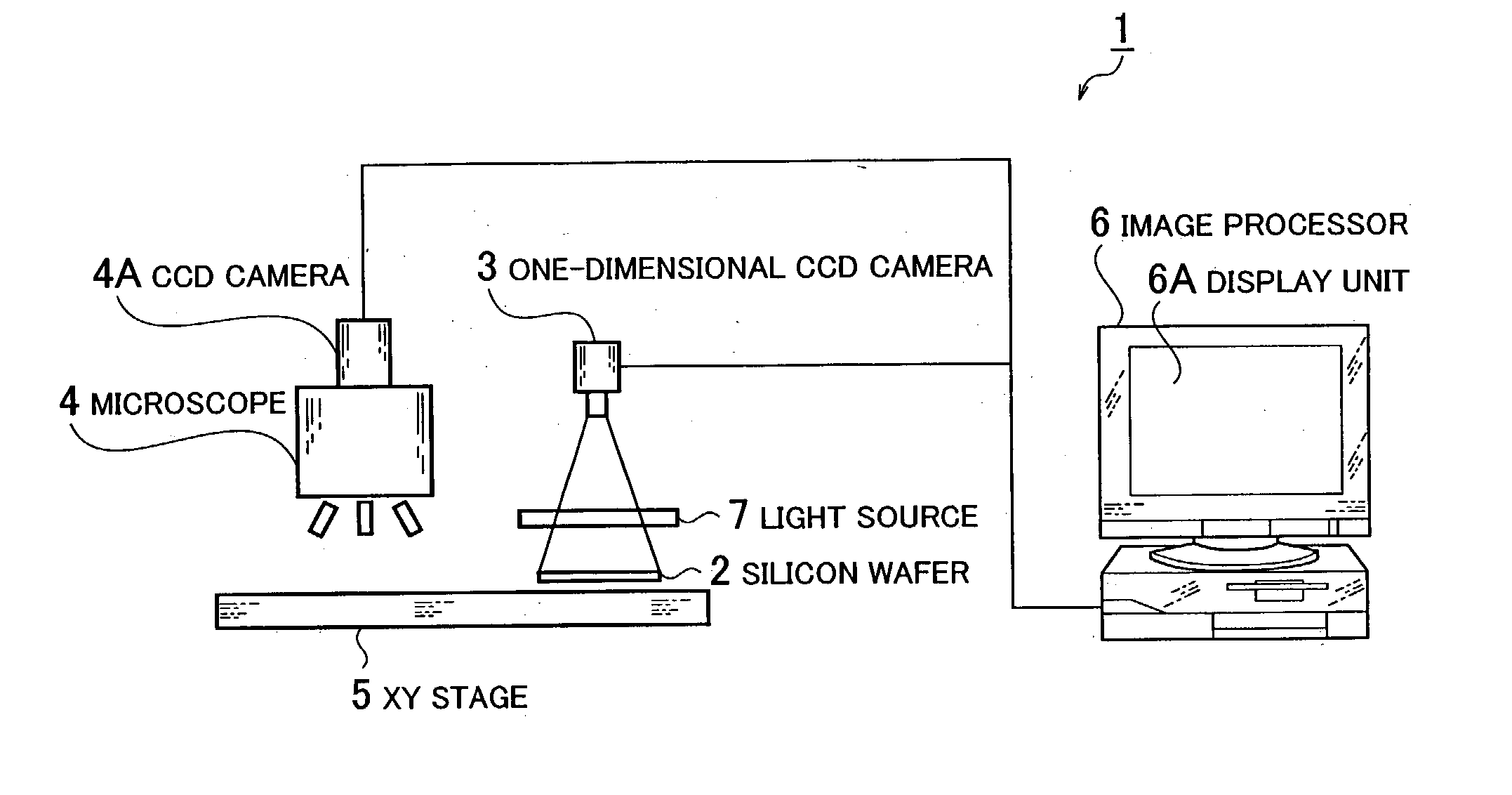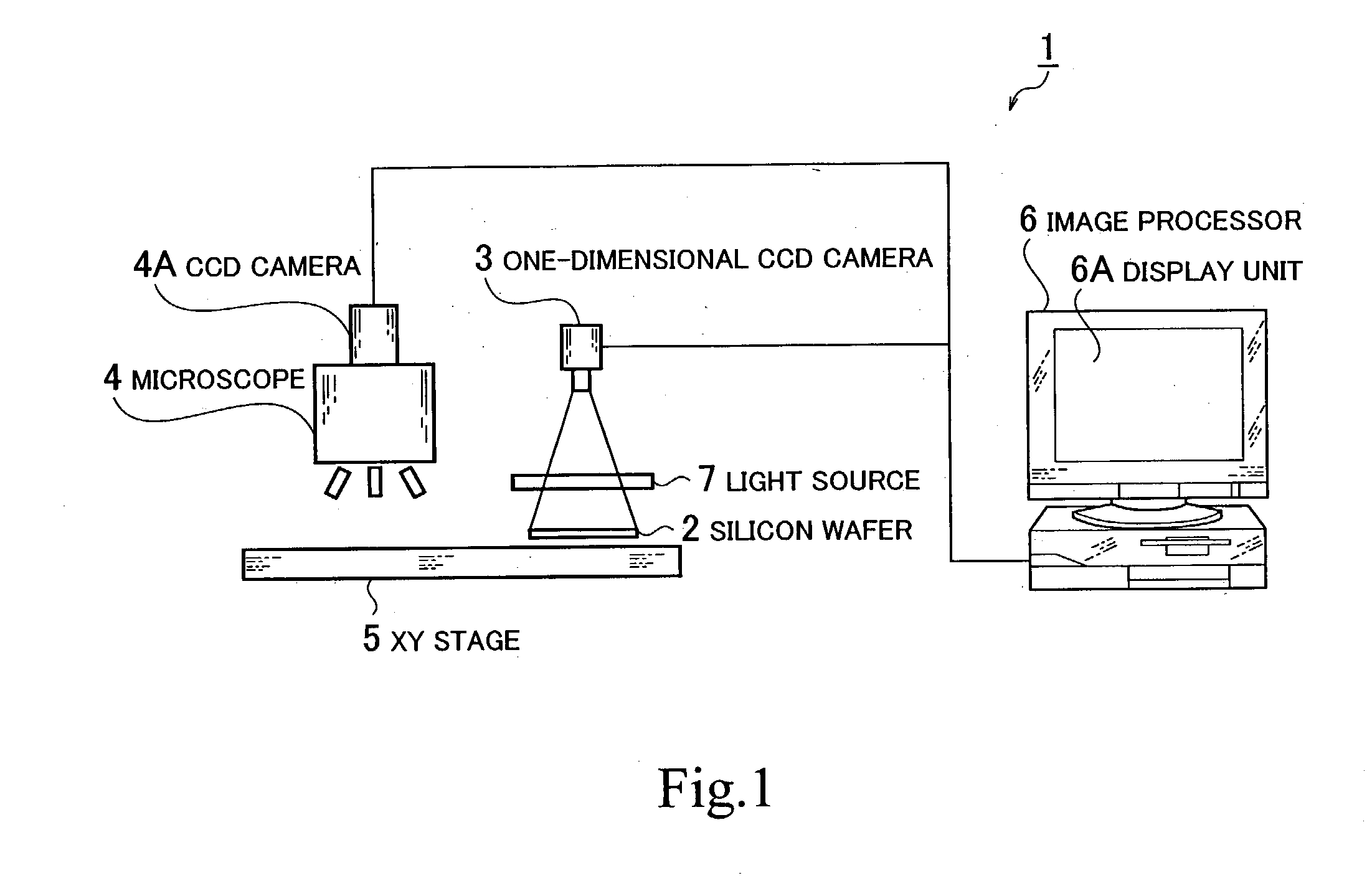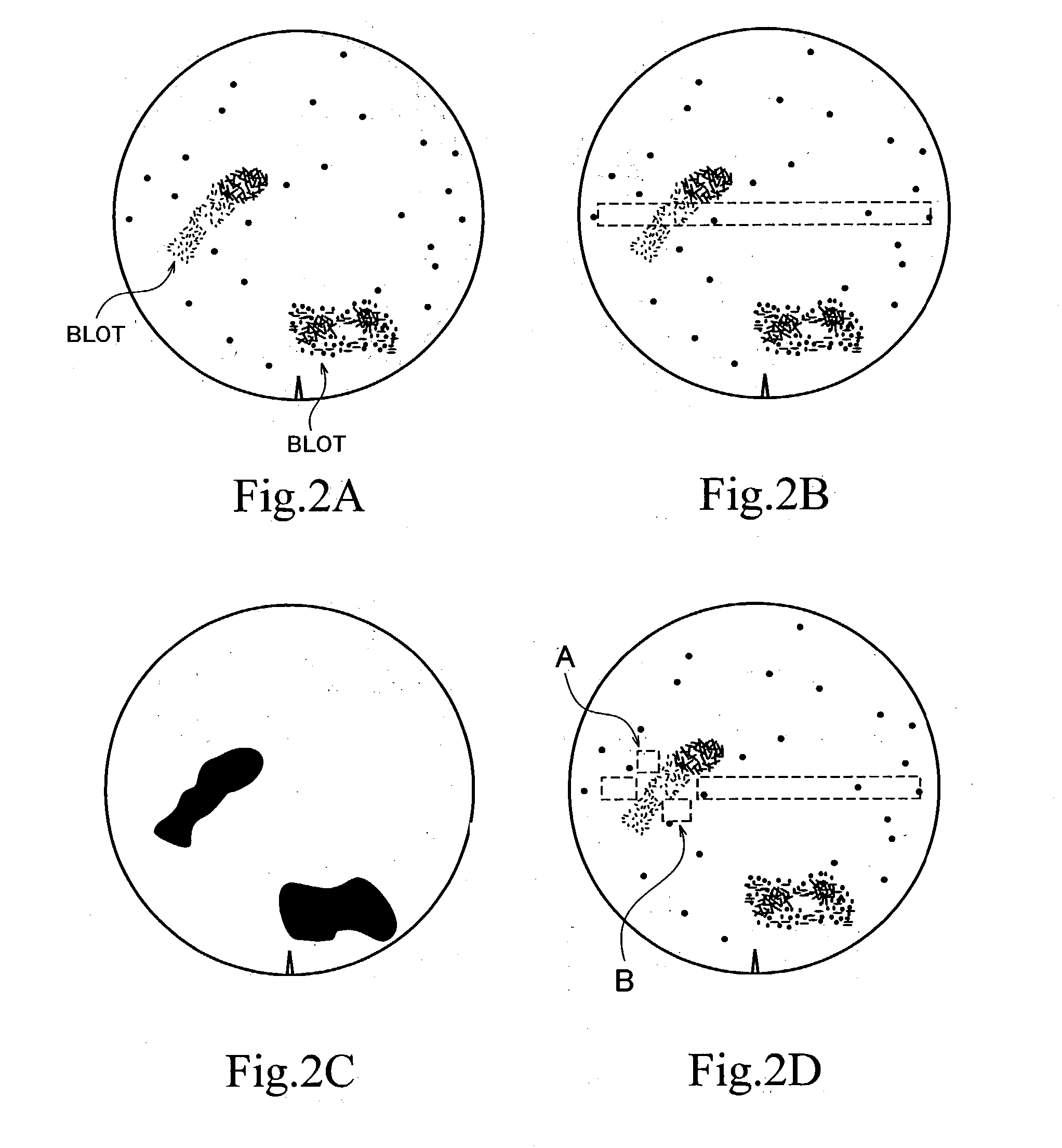Method and apparatus for inspecting defects
- Summary
- Abstract
- Description
- Claims
- Application Information
AI Technical Summary
Benefits of technology
Problems solved by technology
Method used
Image
Examples
Embodiment Construction
[0074] An example will now be described with reference to practical numerical values concerning the defect inspection apparatus 1.
[0075] Imaging conditions for the one-dimensional CCD camera 3 includes the number of pixels of 4096 and a scan rate of 1 kHz. As shown in FIG. 4, the width of a field of view of the one-dimensional CCD camera 3 is 210 mm which is in accord with a silicon wafer of 8 inches. The silicon wafer 2 is conveyed by the XY stage 5 at a speed of 50 mm / sec. A linear light source 7 is used as illumination means.
[0076] Accordingly, the one-dimensional CCD camera 3 is able to image an object at a resolution of 0.051 (mm / pixel) (=210 (mm) / 4096 (pixels)) in its width direction of the field of view.
[0077] In the conveyance direction of the silicon wafer 2, a range of 0.05 (mm) (=50 (mm / sec) / 1000 (Hz)) can be imaged per one time of scanning carried out by the one-dimensional CCD camera 3. Image signals resultant from each time of scanning are stored in an image memory in ...
PUM
 Login to View More
Login to View More Abstract
Description
Claims
Application Information
 Login to View More
Login to View More - R&D
- Intellectual Property
- Life Sciences
- Materials
- Tech Scout
- Unparalleled Data Quality
- Higher Quality Content
- 60% Fewer Hallucinations
Browse by: Latest US Patents, China's latest patents, Technical Efficacy Thesaurus, Application Domain, Technology Topic, Popular Technical Reports.
© 2025 PatSnap. All rights reserved.Legal|Privacy policy|Modern Slavery Act Transparency Statement|Sitemap|About US| Contact US: help@patsnap.com



